#heterodontosaurid
Text
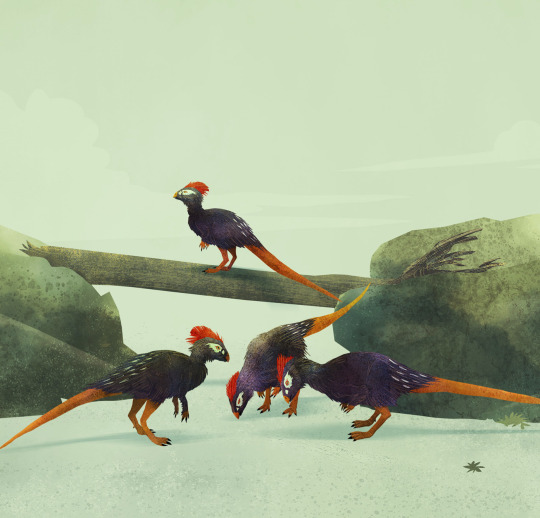
Some hungry Abrictosaurus consors checking out a dried out river bed in Early Jurassic South Africa
#dinosaur#paleoart#illustration#paleontology#paleoillustration#paleoblr#palaeoblr#art#palaeontology#jurassic period#jurassic world#ornithischians#heterodontosaurid#south africa#lesotho#dinosauria
2K notes
·
View notes
Text
Spectember/Spectober 2023 #09: Things With Wings
(Apologies for the abrupt absence – I'm okay, just having everything break down at once. This is fine.)
So— back to the speculative evolution request list!
@thebigdeepcheatsy requested a "cactus-dwelling/germinating evolution of introduced rosy-faced lovebirds":
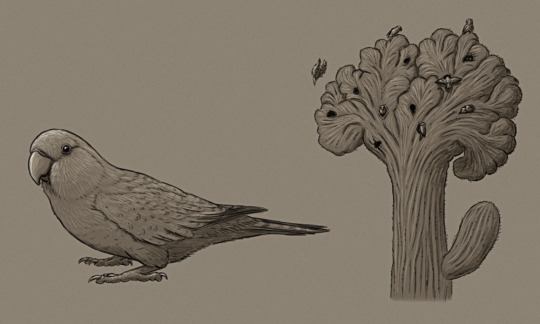
While Agapornis cheatsyi is still quite physically similar to its introduced ancestors, this lovebird has developed a close symbiotic relationship with the cactus Carnegiea ornipolis, a descendant of the modern saguaro.
Naturally fasciated, this cactus grows a splaying fan-like crown which the lovebirds excavate their shallow nest burrows into. Feeding on the cactus' fruit in early summer, the lovebirds then disperse the seeds via their droppings – a process that significantly improves propagation chances, both due to the birds commonly foraging and defecating around suitable nurse plants and the passage through their gut speeding up germination.
———
Someone calling themself "LB" asked for some "flying afrotherians":

Elbeitandraka venenifer is a descendant of tree-climbing Malagasy tenrecs that developed gliding membranes – and its lineage is now just about achieving true powered flight.
About 25cm long (~10"), its proportionally short broad wings require it to fly very fast to generate enough lift for its weight. It mostly only actively flies when traveling between roosts and feeding sites (or when escaping from threats), alternating between gliding to save energy and flapping to recover altitude.
It's an opportunistic omnivore, crawling around in the tree canopy foraging for vegetation, fruits, fungi, invertebrates, and the occasional smaller vertebrate, using its flexible sengi-like nose to probe around in crevices.
Much like modern common tenrecs it's capable of hibernating for months at a time through periods of scarce food availability. It also accumulates alkaloid toxins in its body from its arthropod prey, advertising its unpalatability to predators with bold contrasting warning coloration on its wing membranes.
———
And here's a combination of a couple of anonymous requests for both "flying heterodontosaurs" and "dragons with hind leg wings, a la sharovipteryx":
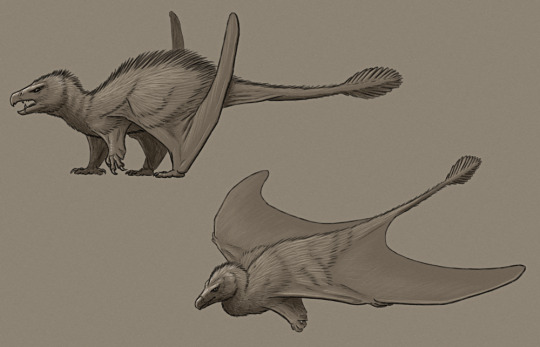
Inversodraco rapax is a highly specialized Jurassic descendant of heterodontosaurids that took to climbing and gliding, developing delta-wing-like membranes on their hindlimbs convergently similar to those of the earlier sharovipterygids.
Around 75cm long (~2'6"), it has unusually flexible hip joints for a dinosaur, able to splay its legs out to the sides to deploy wings supported by an elongated outer toe on each foot. Its arms form small forewings for stability, and its long tail ends in a vane of stiffened feathers that aid in steering.
Unlike its herbivorous-to-omnivorous ancestors it's primarily a carnivore, swooping down onto small prey and grabbing it with its talon-like forelimbs.
#spectember#spectober#spectember 2023#speculative evolution#lovebird#parrot#bird#saguaro#cactus#plant#tenrec#afrotheria#mammal#heterodontosaurid#ornithischia#dinosaur#art#science illustration#look if any mammal is going to copy bats' homework it's going to be tenrecs
266 notes
·
View notes
Text

More school art. I don't have much to say about this except for that it's very green. Also the dino is a heterodontosaurus and the guy in the corner is a temnospondyl amphibian
#art#my art#digital art#paleoart#paleontology#palaeoblr#dinosaurs#ornithischians#heterodontosaurids#heterodontosaurus#queue#scopophobia tw#< idk if it really needs a tw but I'm tagging it just in case it does
46 notes
·
View notes
Note
Just saw ur vulture post. Could a dinosaur have a crown like a chicken? If so, which ones are most likely to have this feature?
I feel like chicken combs are one of those things that's so normal to us because we're familiar with chickens that we don't appreciate how wacky looking it is, like this animal's entire face gets turned into a massive billboard of red skin flaps.

As far as I'm aware there's no underlying bone structure that correlates to chickens' combs, so if an extinct dinosaur did have one we wouldn't see it in the fossil record unless it was exceptionally well preserved. That being said, there are a few guidelines that can help make some generally arm-wavey guesses about what may or may not have had them!
For predator species I'd say large brightly coloured billboards on the face are fairly unlikely since across most land vertebrates predators tend to prioritise stealth and blending in. I don't know for sure, but I would guess that more carrion-eating vultures have adornment because they don't need to stay hidden from their food, cause it's, y'know. dead.
Dromaeosaurs are generally though to be predators, although like most predators they probably incorporated scavenging into their feeding patterns and we don't know whether there were any species that specialised as carrion eaters! I have drawn dromaeosaurs with combs or crests before, and I definitely don't think it's an impossible suggestion, but I think it's most reasonable to give them muted colours like with this Saurornitholestes:
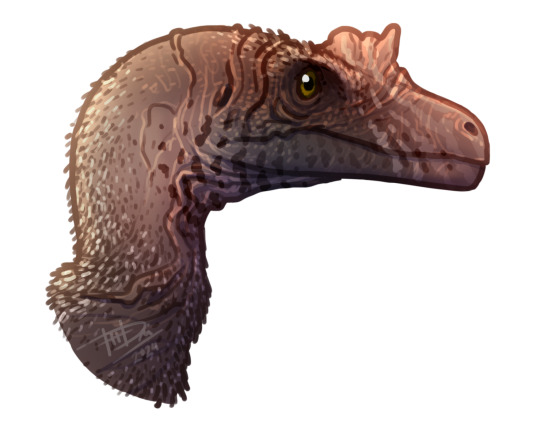
I would guess that smaller omnivorous or herbivorous maniraptorans like oviraptorosaurs or small ground birds are more likely candidates to have flashy skin on their faces, although large oviraptorosaurs with bony crests probably didn't also have a comb on top of that.
Something like Avimimus, which was a small oviraptorosaur that likely lived in groups according to a bonebed of at least ten individuals together. Something like a colourful comb or wattles on these guys could be used for social signalling or species recognition:

As far as I'm aware there's next to no skin data for small ornithischians like heterodontosaurids and ornithopods aside from the funky Kulindadromeus scales, but being small, mostly herbivorous, probably quite social animals I can see an evolutionary benefit to bright signalling structures! Alongside oviraptorosaurs, I think small ornithischians like Manidens here are probably the best non-avian analogue to modern ground fowl that have these kinda of wacky skin structures:
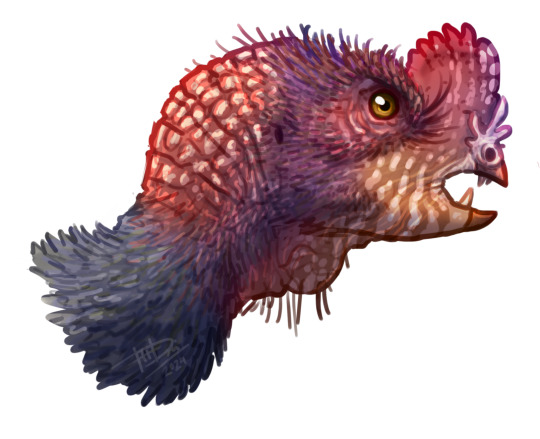
So overall. Yeah I think there's potential that Mesozoic dinosaurs could have had a chickenlike comb! Like with modern fowl, it would have evolutionary value to small social species as a display structure, but tradeoffs like being more visible to predators/prey would definitely be in play here.
I mean obviously the tradeoff is worth it in some cases since we get creatures like this walking around on this earth:

Basically my message with all this is like. When doing palaeoart look into what areas are open to speculation, then think about what factors might constrain those!
710 notes
·
View notes
Photo

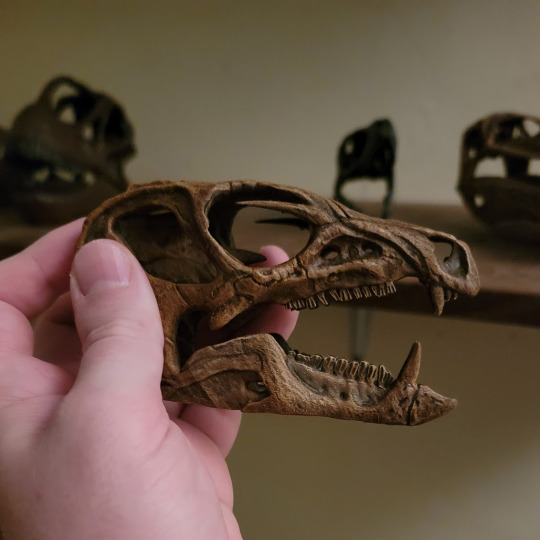
Work in progress sketch for Heterodontosaurus tucki, an Ornithischian dinosaur that lived from the early Jurassic to the early Cretaceous (200 to 140 million years ago). They were small animals, with H. tucki being one of the largest members of its family at a theoretical length of only 5 feet 9 inches and weighing in at a portable 22 pounds.
Their name translates as "different toothed lizard," a reference to their uniquely varied types of teeth. While most dinosaurs only had one type of teeth for eating plants or meat, Heterodontosaurids had 3 different types; including small incisor-like ones in the front, behind a small beak, cutting cheek teeth, and vicious fang-like incisors.
Despite packing 2 sets of saber-teeth it is likely that H. tucki was an herbivore or perhaps an omnivore. The incisors on the upper jaw were serrated on the back and the ones on the lower jaw were serrated on the front, allowing them to work together at whatever it was attempting to eat.
A relative of H. tucki, Tianyulong was discovered with hundreds of bristle like filaments along it's body, there is a good chance that other Heterodontosaurids also possessed this spiky coiffed integument.
-----------------------------------------------------
As part of my reference for this piece I used this amazing 1:1 skull reconstruction from scaledbeast.com
It's a great place to get realistic reconstructed skulls for all sorts of prehistoric creatures; great for art reference and great for collecting!
#workinprogress#wip#heterodontosaurus#dinosaur#dinosaurart#dino#dinoart#paleo#paleoart#paleontology#sciart#science#natural history#digitalart#digitalillustration#illustration#illustrationart#art#artist#humanartist#prehistoric#sketch#drawing#jurassic#artistsontumblr
259 notes
·
View notes
Note
What if: Spamton Heterodontosaurid???
I'm crying

15 notes
·
View notes
Text


#Archovember Day 1 - Your Choice!
In my ongoing effort to draw all the non-avian dinosaurs we know the colors of, I’ve chosen Anchiornis huxleyi!
The type species for the Anchiornithids (“near birds”), Anchiornis huxleyi was a crow-sized dinosaur living in the Late Jurassic of Liaoning, China. It was relatively common, as hundreds of specimens have been uncovered in this area. But what makes Anchiornis so unique and important is that it was the first Mesozoic dinosaur species to have its entire life appearance be known by man! Having hundreds of well-preserved fossils available allows us to extract a lot of information about not only its size and shape, but its skin, feathers, and even coloration. Anchiornis had long wing feathers on its arms and legs (though its leg feathers were not as long as those of Microraptorians), fluffy downy feathers all over its body, a feathered crest on its head, and feathers covering its feet.
Only two Anchiornis fossils have had their well-preserved melanosomes studied so far. By comparing the structure of these melanosomes to modern birds, paleontologists have been able to infer the life colors of Anchiornis! It had mostly gray and black body feathers and white forewing and hindwing feathers with black tips. Its tail colors remain unknown. The first specimen of Anchiornis to be surveyed for melanosomes also had red or rufous coloring on its crest, as well as rufous speckles on its otherwise black and gray head. However, the second specimen did not have any rufous coloration. This may be due to different preservation of melanosomes, different investigative techniques, the animals in question having regional differences or even being different species/subspecies, the second Anchiornis being younger, or sexual dimorphism.
While Anchiornis had rather large feathered forelimbs, it didn’t seem to have been much of a flier. Unlike the later Microraptorians, its wings were rounded and relatively short compared to other flying dinosaurs, and the flimsy flight feathers overlapped each other to strengthen them. A 2016 study concluded that while juvenile Anchiornis may have been able to use their wings to assist with leaping through the trees, adults were simply too heavy and their wings too small to gain any lift. Instead, it is more likely their wings were used for display. As their legs were long, they may have been adapted for speed, using their wings to aid in aerodynamics as they quickly darted through the underbrush.
Pellets (such as those coughed up by owls) have been found both within and in association with Anchiornis, and contained lizard bones and fish scales. Prey items that could have also been eaten by Anchiornis include insects, arachnids, salamanders, small anurognathids (such as Cascocauda, who we will be visiting later this month) and other small or juvenile pterosaurs, and small cynodonts like Agilodocodon and Juramaia.
Anchiornis lived alongside other Anchiornithids such as Aurornis, Caihong, Eosinopteryx, Pedopenna, Serikornis, Xiaotingia, as well as the Scansoriopterygids Yi, Scansoriopteryx, and Epidexipteryx. It also lived alongside the quilled heterodontosaurid Tianyulong.
#my art#SaritaDrawsPalaeo#Anchiornis huxleyi#Anchiornis#Anchiornithid#paravian#theropods#saurischians#dinosaurs#archosaurs#archosauromorphs#Archovember#Archovember2023
25 notes
·
View notes
Text
Monday's Musings: The Smallest Non-Avian Dinosaur
This is Fruitadens:

This is also a rough of a page from the dinosaur alphabet book I am making. Fruitadens may not have been the absolute smallest dinosaur, but it was definitely the smallest ornithischian dinosaur. It was found in the Brushy Basin Member of the Morrison Formation in the Fruita Paleontological Area of Fruita, Colorado. (Incidentally, this is the town my grandparents live in). It is a heterodontosaurid, meaning it has some weird teeth.
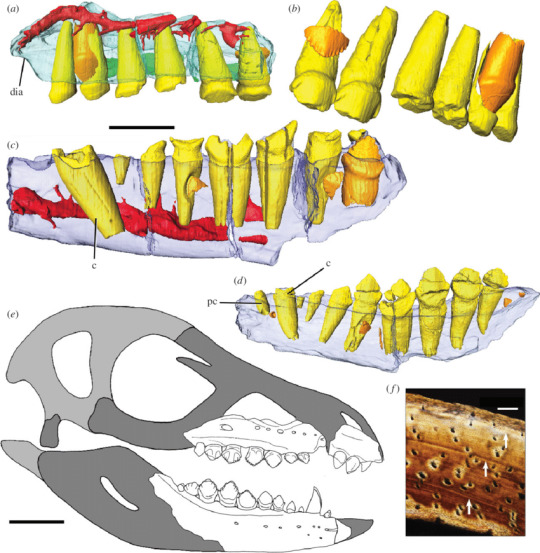
It had large canine-like teeth in the lower jaw with a corresponding gap for it to rest comfortably in when the mouth was closed. Unlike most of its relatives, it had a small peg-like tooth in front of the canine-like one.
At only 30 in (75cm) at most in length, these little guys were outliers living in a time of giants.

It was thought to be an omnivore and it had hollow bones like theropods that made it very light-weight so it could run incredibly fast.
I think it would be so fun to find something this tiny amongst all the giants we have at our site. The best way to do that? Have lots of hands out there moving rock with us! Want to be part of something amazing and life-changing? Block out a few weeks in July to come join us for our Field Paleontology Course at CNCC this summer! We'd love to see you there!
10 notes
·
View notes
Note
I've never really had a strong interest in dinosaurs, but watching you be so passionate about them kinda made me curious.
Do you have any fun facts about them that you could share with me?
Of course! Thank you for asking! 💗
I love dinosaurs since childhood and I have never lost interest in them! 🥰
Here are some facts about them:
Birds are dinosaurs! All of them! They are more accurately called avian dinosaurs while dinosaurs living in the Mesozoic are called non-avian dinosaurs. While pterosaurs (like Pteranodon), marine reptiles (like Mosasaurus) and prehistoric synapsids (like Dimetrodon) are not dinosaurs!
Here is one basic fact: dinosaurs are in a clade called Archosauria (ruling reptiles; there are also crocodiles) and are divided into two major orders: Saurischia (reptile-hipped) where do Sauropodomorphs (long-necked dinosaurs like Apatosaurus) and Theropoda (bipedal mostly carnivorous dinosaurs like Tyrannosaurus and birds) belong and Ornithischia (bird-hipped) where other non-avian dinosaurs such as Triceratops, Stegosaurus, Pachycephalosaurus and Parasaurolophus belong.
Most media portray theropods with pronated wrists, which is actually incorrect because they would break their bones that way.
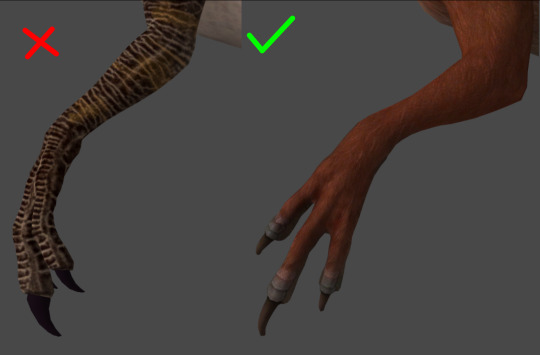
4. We know the coloring on some dinosaurs thanks to preserved feathers or skin! Here are some examples:
Anchiornis

Caihong

Microraptor

Sinosauropteryx
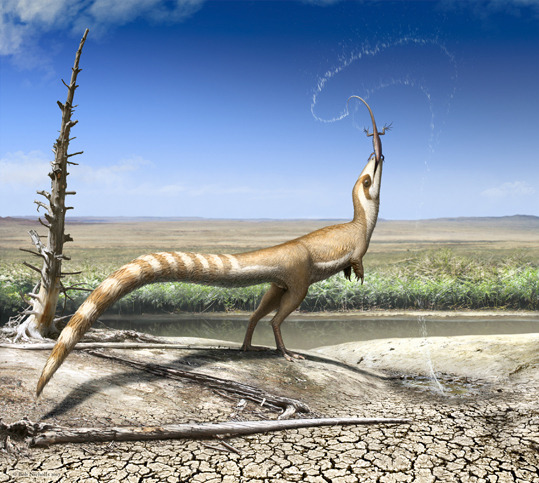
Psittacosaurus

5. Heterodontosaurids are one of the strangest and most underrated dinosaurs.


6. Fossils of dinosaurs and prehistoric animals are found in fragments. Whole skeletons are very rare because are mostly not preserved after millions of years. It is possible that some fauna and flora will never be discovered, because their fossils have not been preserved. 😢
Anyways here are some photos of beautiful fossils ☺️:
The Berlin specimen (Archaeopteryx siemensii)

'Fighting Dinosaurs' (Protoceratops andrewsi VS Velociraptor mongoliensis)
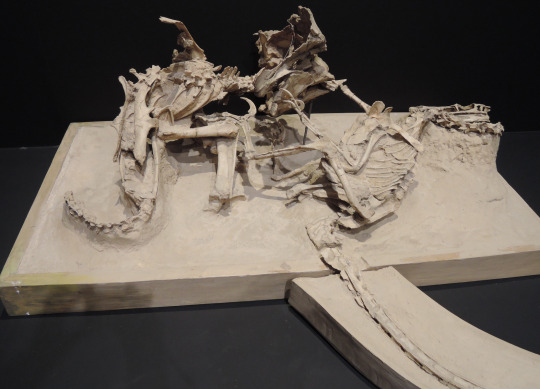
'Dinosaur Mummy' (Borealopelta markmitchelli)

SMF R 4970 (Psittacosaurus sp.)

FMNH PR 2081 'Sue' (Tyrannosaurus rex)

7. In the past, paleontologists thought that dinosaurs were giant, slow reptiles until the discovery of Deinonychus, which was more similar to birds.
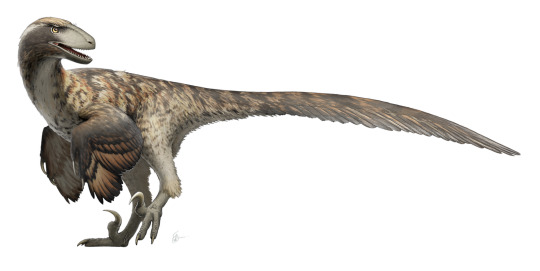
8. Troodon is a potentially invalid genus because it's known only to a single tooth and was used in the past as a wastebasket taxon for newly discovered organisms. Troodon could be Stenonychosaurus or Latenivenatrix.

9. Dinosaurs and prehistoric animals are constantly reconstructed when new fossils are found. The most famous (and infamous) examples are Iguanodon and Spinosaurus as the samples of how we see them today over the years.


10. A many hadrosaurids have various crests that are hollow and used to make loud noises. They are one of my favourite groups of dinosaurs.

That's all for today! 🥰
#sorry it took so long I was trying to find sources of artworks#fancysteawberrybeard#dinosaurs#tamiisnthere's ask
6 notes
·
View notes
Text
Enamel microstructure and dental histology in a heterodontosaurid dinosaur: Heterodontosaurus tucki
Published 1st December 2023
Researchers investigate the histology and enamel microstructure of Heterodontosarus tucki maxillary cheek teeth using SEM anaylsis. Results reveal the specimen possessed relatively typical ornithischian enamel schmelzmuster on the mesial and distal edges of the maxillary teeth as well as thin enamel and simplified microstructure indicating the enamel is largely non-functional as a shearing crest; this histological structure represents the chronologically and phylogenetically earliest known acquisition of wear-resistant modified dentine in ornithischians and the earliest occurrence of its presence on the occlusal surface in dinosaurs.

Heterodontosaurus tucki (BP/1/9007) Left partial maxillary tooth row
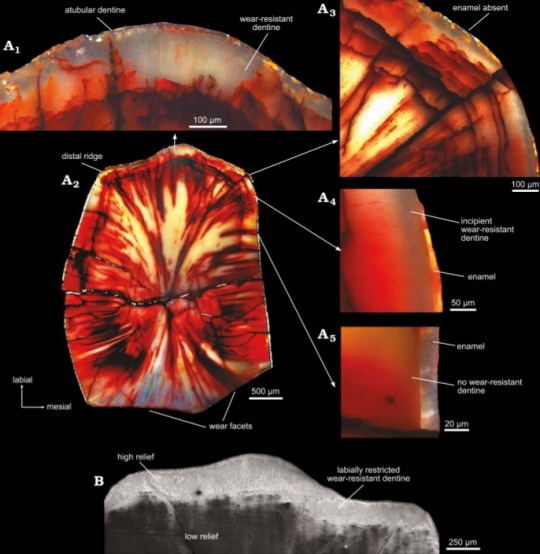
Maxillary tooth histology of Heterodontosaurus tucki, (A) Histological sections, (B) SEM of tooth
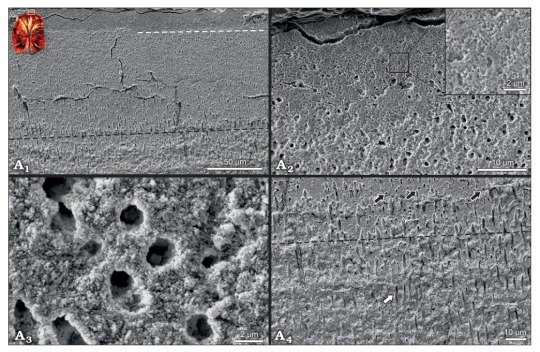
SEM images of histologically distinct dentine on the outer labial edge of maxillary teeth of Heterodontosaurus tucki
Source:
6 notes
·
View notes
Text
Tianyulong confuciusi
{'Tianyu dragon, for Confucius')
Ornithischia Heterodontosauridae
A quilled or feathered heterodontosaurid known from several specimens, named for the Shandong Tianyu Museum of Nature, where those specimens live.
Tiaojishan Formation, Liaoning, China.
Upper Jurassic, ~158.5 Ma.
~
Artwork by Julius Csotonyi.
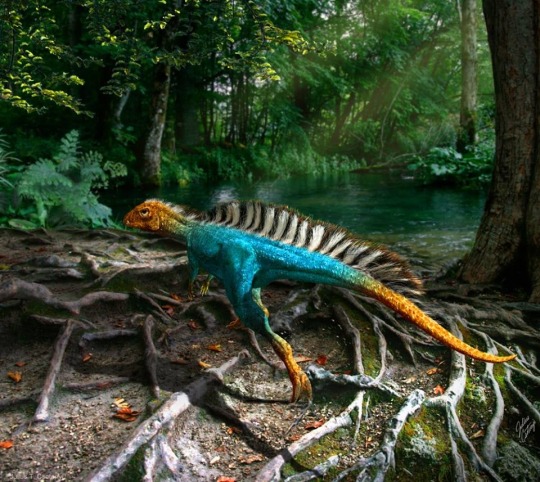
Daily Dino Fact #31
2 notes
·
View notes
Text
Triassic Dinosaurs: Behaviors and Adaptations for Survival
The Triassic period marked a pivotal chapter in the early stages of dinosaur evolution. Lasting from 252 to 201 million years ago, this critical interval saw the first emergence and diversification of dinosaurs as the dominant large land animals after the Permian mass extinction. Examining how the earliest dinosaurs adapted and behaved sheds light on their rise to prominence. Scientific discoveries continue uncovering clues about triassic dinosaurs feeding, social interactions, defensive tactics, migrations, and responses to environmental pressures. These revelations help paint a vivid picture of how these pioneering dinosaurs carved out ecological niches and flourished under challenging conditions.
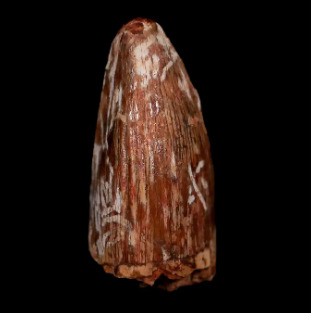
Social Behavior and Intelligence
Contrary to visions of dinosaurs as primitive and dim-witted, recent evidence suggests at least moderate intelligence and social capabilities emerged early in dinosaur evolution. Excavations have uncovered Triassic dinosaurs preserved together, indicating likely herding or pack behaviour. Trackways also showcase groups migrating together. Herding offered protection against large predators. Communication and social hierarchy were likely integral to maintaining cohesion.
Intelligence to navigate diverse habitats and identify ideal feeding grounds also appears present. Brain cavity studies point to problem-solving aptitude and memory centres developing in the Triassic dinosaur lineage. Parental care of vulnerable juveniles was another probable behaviour indicative of advancing cognition and bonding. Far from simple brutes, even early Triassic dinosaurs exhibited surprisingly sophisticated behavioural repertoires.
Feeding Strategies and Hunting
As primary consumers, triassic period dinosaurs employed varied feeding strategies to exploit their environments. Large carnivores like Eodromaeus and heterodontosaurids featured serrated teeth and claws for slicing flesh. Swift bipedal movement enabled active hunting of smaller prey across open terrain. Jaw biomechanics optimized for wide gaps allowed for consuming large food items.
In contrast, abundant massospondylid sauropodomorphs evolved grinding dentition to process tough plants through digestion. With no chewing, simple but efficient guts extracted nutrients. Armored thyreophorans relied on beaks and shearing dentition to harvest low-growing vegetation. Omnivorous early theropods occupied generalized niches between strict herbivory and carnivory. Creative feeding approaches fueled dinosaur success.
Reproduction and Growth
Dinosaur dominance ultimately relied on reproductive strategies that ensured population stability and growth. Vigorous growth rates are evidenced by large size achieved rapidly from much smaller hatchlings. Clutch sizes likely ranged higher for smaller species and lower for giant sauropodomorphs investing heavily in few offspring.
Nesting sites and parental nurturing behaviour are suggested by brooding postures preserved at excavations. Dinosaur nesting habits represent some of the earliest evidence of intensive parental care in the fossil record. Sexual maturity may have arrived within 10-15 years, enabling sufficient replacement rates. Reproductive biology was central to thriving in the Triassic world.
Physical Adaptations
Diverse anatomical features evolved that enabled Triassic dinosaurs to thrive in demanding environments. Bipedal and quadrupedal posture provided efficient locomotion across the broken Pangaean landscapes. Streamlined body shapes reduced weight. Limbs developed running, walking, and grasping specializations for active lifestyles.
Vision and neurological function enhanced sensory capabilities. Jaws transitioned toward optimized designs for feeding strategy. Armoured plates, spines, and clubs served as passive antipredator defences. Wings, feathers, and primitive air sacs emerged in small theropods and flying relatives like pterosaurs. Anatomical form followed function.
Behavioural Adaptations
Alongside physical adaptations, certain behaviours also confer survival advantages. Increased parental nurturing improved juvenile maturation success. Complex courtship rituals preceded mating. Gregarious group living offered protection from large predators.
Herding and migratory behaviour helped track seasonal food sources and expand foraging ranges. Burrowing and nesting allowed shielding from extreme weather and concealment from threats. Even basic behaviour patterns provided survival benefits as the Triassic environment imposed intense selection pressures.
Environmental Adaptations
Dynamic climate shifts and geological upheavals presented environmental challenges in the Triassic that dinosaurs met through adaptations. As Pangaea rifted apart, dinosaurs dispersed outward to occupy new ecosystems. Fluctuating greenhouse and arid conditions were met by changes in dentition and metabolism.
Dealing with the catastrophic Permian extinction’s aftermath necessitated flexibility and opportunism. These early dinosaurs exhibited sufficient adaptability to respond to environmental fluctuations and take advantage of newly vacated niches. Dinosaur success relied on capitalizing on environmental changes.
Scientific Discoveries
Ongoing fossil discoveries continue revealing intricacies of Triassic dinosaur adaptations and behavior. Trackways preserve social groupings and speed. Digs uncover nesting sites with embryos and eggs that suggest parental care. Microscopic tooth wear and bone histology provide dietary clues. Fossilized stomach contents directly showcase feeding ecology.
Advanced imaging techniques peer inside rare triceratops skull to reconstruct neurology and sensory capabilities. Geochemical analyses identify migration patterns from isolated bones. Even fossilized faeces (coprolites) offer insights into digestion and health. Each new find illuminates a small part of the Triassic dinosaur story.
Research Contributions
Studying how early dinosaurs adapted to their environments and evolved behaviours to facilitate survival provides broader evolutionary insights. Analyzing the tempo and mode of dinosaur adaptations allows for testing theories about the mechanisms behind major evolutionary transitions. Tracing anatomical changes across lineages reveals pathways for key innovations.
Triassic dinosaurs represent an ideal model system for exploring evolutionary trends like competitive exclusion, opportunism, convergence, and arms races. These pioneering dinosaurs anchor our empirical understanding of how ecological pressures shape life over geological timescales through dynamic adaptation and natural selection.
Conclusion
Triassic dinosaurs developed intriguing adaptations and behaviours that enabled their rise to prominence after the great Permian extinction. Evidence shows them acquiring more complex social structures, feeding modes, reproductive strategies, and environmental responses than traditionally envisioned. Each new discovery provides more clarity on how dinosaurs originated, diversified, and came to dominate terrestrial ecosystems for the next 135 million years.
Ongoing fossil finds, and modern analytical techniques will further enrich the emerging picture of dinosaur life in the primordial Triassic period. Ultimately, deciphering the early behaviours and adaptations of dinosaurs teaches us broader lessons about evolutionary mechanisms, survival, and success that still resonate today. The dinosaurs’ story remains one of biology’s greatest sagas.
0 notes
Photo

Dinovember day 9: Echinodon
Three Echinodon shelter in a small cave as a rainstorm pours down from the heavens.
Echinodon is a species from southern UK... It was probably just as rainy then as it is now.
3 notes
·
View notes
Text


Some concepts for this piece.
I hadn't realised that they had five fingers while doing these ;-;
#art#my art#digital art#sketches#paleoart#palaeoblr#paleontology#dinosaurs#ornithischians#heterodontosaurids#heterodontosaurus
17 notes
·
View notes
Note
What do we know about the diet of Heterodontosaurs?
5 notes
·
View notes
Text
This month has been so busy, so no quality Inktober art. But I've always missed Inktober, so this month I gotta draw something with pen no matter what. Here's the result.

Ruiconodon tachibanae is a 9 m long predatory dinosaur that lived in Early Cretaceous.
Its well-known feature is its saber teeth, and a hide of proto-feathers.
From its leg anatomy, its inferred that Ruiconodon is a fast runner.
Given its unique jaw structure, Ruiconodon is one of few carnivorous dinosaurs that can chew.
Unlike other carnivorous dinosaurs, Ruiconodon is an ornithischian, descended from heterodontosaurid-like dinosaurs.
8 notes
·
View notes